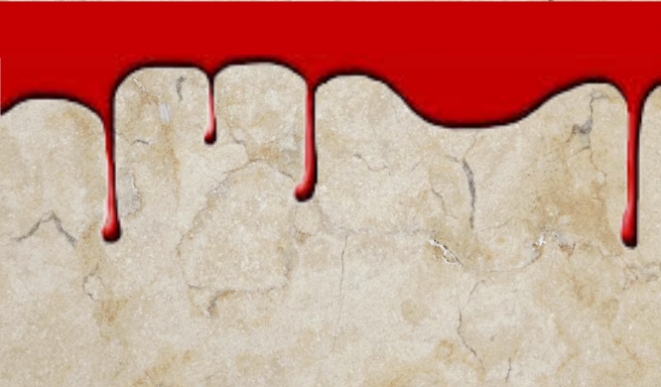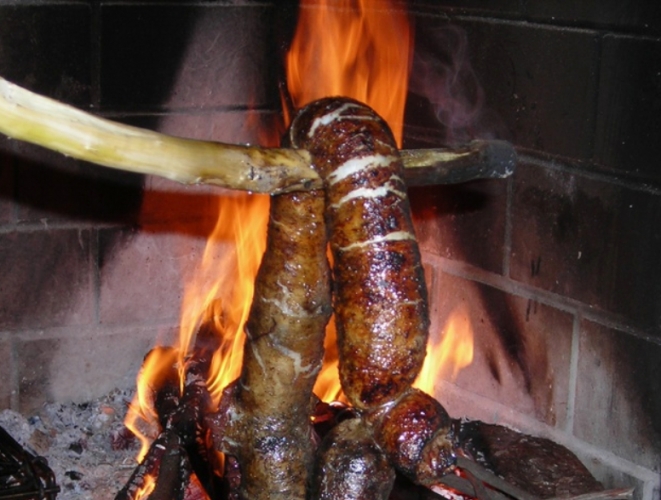The rituals of blood in Sardinia
The remedies for
[...] In Arasolè bread were eaten, mostly bread. Then, according to the seasons, other things: in the winter, bread and lard; in the spring, bread and ricotta cheese; in the summer, bread and tomatoes, which were called "lobsters of the poor"; the autumn, bread and prickly pears. The poor lived off only the autumn, so called " fatten poor autumn ". [...]
So Francesco Masala, in his only novel "Those white-lipped", dramatically describing a poor village of Sardinia, represents the poor people eternally starving, just "those white-lipped," tormented by the greed of that food reserved for the rich, whose lips were rather red, as well as the porporine lips of the girls celebrated passionately in many popular ballads.
This yearning desire of flesh and blood was due to the very high nutritional value of the blood and its fortifying properties. Before that malaria was wiped out, along with the scourge of hunger, anemia was, in fact, widespread and feeding meat was its main remedy. Indeed, to consume the still palpitating liver of the animal just slaughtered, just scalding it on the coals, was considered a panacea.
Sardinians today still continues to prefer fresh meat, which is consumed before it is even begun the process of maturation that, by relaxing the nerves and tendons, softens the muscles and increases the value of the cut.

Before the consumer society overwhelms the traditions, in the occasion of slaughter it was took care not to lose even one drop of blood. The liquid that flowed from the fatal wound was collected in a bowl and immediately stirred in order not to coagulate.
The request of the blood was also made more valuable by the demand by the industry of the wood craft. The chestnut settles of Barbagia and Mandrolisai were, in fact, painted with the blood of goats, that gave the distinctive waxy shade, nourishing and making elastic wood, thus ensuring the durability of the furniture.
It was then used for making rustic dishes that, if at first they were imposed by a situation of poverty, at a later time they became delicacies.
The most famous is undoubtedly the pork black sausage, once produced in all the districts of the Island, with a dough that linked blood with sapa (cooked must) and raisins, nuts and honey, spirits and spices. The compound was made to cook on low heat for hours until it reached a creamy consistency.
So it was stuffed in a casing in a pork gut and boiled for about twenty minutes in order to keep it for some time. It was then heated on the grill and served as winter dessert.

In more rural areas was preferred the spicy blood sausage called "sanguini de porcu de monti "(blood of mountain pork) or "sanguini de su porcargiu" (blood of the swineherd). It was a stuffed dish flavored with salt and pepper and thymus, thickened with bread crumbs and roasted by flame.
Authentic specialty of the dishes of blood, however, is the sheep's stomach stuffed, called in Ogliastra and Barbagia "brenti de sangui" (belly of blood).
Once washed carefully the stomach of a lamb, aside, in a pan, you do fry in lard chopped onions, fresh field beans, bread crumbs, salt, pepper and wild mint. Then together with blood are added three cheeses: pecorino cheese, medium seasoned cheese and "casu axedu" a kind of yoghurt consistent and tasty, slightly sour.
The whole is poured into the stomach of the lamb that is closed with a stick of heather called "su sartìgu" and boiled for about an hour. Once it cooled it is sliced and served with the appreciation of admirers.